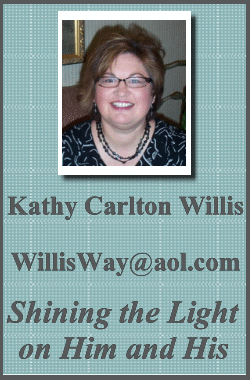|
One
of our readers requested tips on how to evaluate and appreciate good
novels. Last month we discussed how to dig deeper when reading, and
this month we’re looking at the elemental ingredients of excellent
writing. If you take the time to analyze each of these areas while
reading, you’ll discover layers cleverly crafted to create a stand-out
novel.
THEME
What is the theme of the story? Is there a moral or life lesson? What
message do you think the author wants to convey to the reader? You will
be able to see the themes unveiled as characters make choices and
reveal their strengths and weaknesses. Look for integrity and virtue.
What is of value to the main characters? Without theme woven throughout
the book, the story lacks substance.
CHARACTERIZATION
One of my favorite ways to evaluate a novel is by noting character
development. Do you find yourself caring what happens to the
characters, or how they react to situations? Are the characters
true-to-life, three-dimensional beings, or do they seem unrealistic?
Even speculative fiction characters need to have relatable traits for
readers to be drawn into the story. Characters have hopes and fears,
life goals and motives. They react to relationships based on their
personality types and any baggage or life experience they possess.
Sometimes the author won’t reveal everything about a character in the
story line, but you can pick up on clues as you read the way they
respond to stimuli throughout the book.
Are the characters consistent
throughout the novel? It’s fine if they show growth or evolve as the
story unfolds, but they should always be true to character. If
something stands out as unrecognizable for that character, it creates a
read-bump that confuses the reader. Also, individual characters
shouldn’t be “Stepford Wives” or cookie-cutter people. Readers love
getting to know quirky or unpredictable characters.
PLOT
The plot is what moves the characters from situation to situation
throughout the story arc. It’s what causes page-turning suspense,
action, or romance. Without plot, there’d be no resolution at the
conclusion of the novel. Does each scene advance the plot? Or does the
author bury the storyline in minutia? Actions and agendas reveal the
plot as characters overcome trials and face detours. Plot builds
tension, leading to the story climax. Ask yourself, “Is this event or
situation necessary to the rest of the storyline?” Conflicts throughout
the book help build tension. Look for conflicts:
1. between individuals
2. between a person and society in general
3. between a person and nature
4. within the character’s warring values
Plot is the invisible web that
provides structure to the entire book. Some authors achieve this by
outlining the major scenes in advance, while “seat of the pants”
writers,allow the characters to tell them where to go next in the
story.
POINT OF VIEW
Do you like the point of view used by the storyteller? In first
person, one character speaks in the “I” voice. Second person
is the least common point of view and uses “you” as the story is
narrated. Third person is the most frequently used
method. Third person limited: The narrator can tell
the story from the perspective of only one character throughout
the entire book. This requires the character to be in every scene, and
sets up the story through what he witness from his own eyes. Third
person unlimited: The author tells the story from the
perspective of
|
more
than one main character. He will alert the reader
that point of view change is coming by adding an extra space of some
kind between paragraphs. If this is not done correctly, it will seem as
if the author is “head hopping”—jumping between the perspectives of
more than one at once. This can be quite dizzying to readers. Some
authors will use a technique called omniscient
point of view, but it is rarely done well. In this scenario, a narrator
or voice outside the main characters tells the story as if he is
witnessing it from a perspective outside the scene. He presents it from
a variety of views at once.
SETTING
What is the setting for the story? Does the author choose a real
location? If so, facts must be accurate. You’ll know if he’s done
enough research. Setting must serve both style and story. More often
than not, the author creates an imaginary setting for the story. Even
if it’s not real, it needs to be believable. Does the book you’re
reading use setting in such a way that you feel like you are
transported there? Does it lend itself well to assist with character
development and plot to deliver an excellent novel?
DIALOGUE
Dialogue involves conversation between two or more characters. Dialogue
functions to advance the story and build texture by showing the reader
what’s happening rather than narrating a lot of backstory. It provides
background and builds characterization. Does each character have a
distinct voice? Does the dialogue seem realistic, or is it stilted?
Stylization of dialogue often uses unique speech patterns, word choice,
or accent. When you read the dialogue aloud, how does it sound to you?
Dialogue is also used to set the
mood and to provide some humorous elements for the reader. Dialogue
often happens in present tense even if the story is in past tense,
allowing the reader to sense the pace, the action, and the tension in
real time.
Reading Assignment:
You will become a better reader as you analyze books from these
elements required for good writing. Pick up your current read and grade
it for theme, characterization, plot, point of view, setting, and
dialogue.


|









